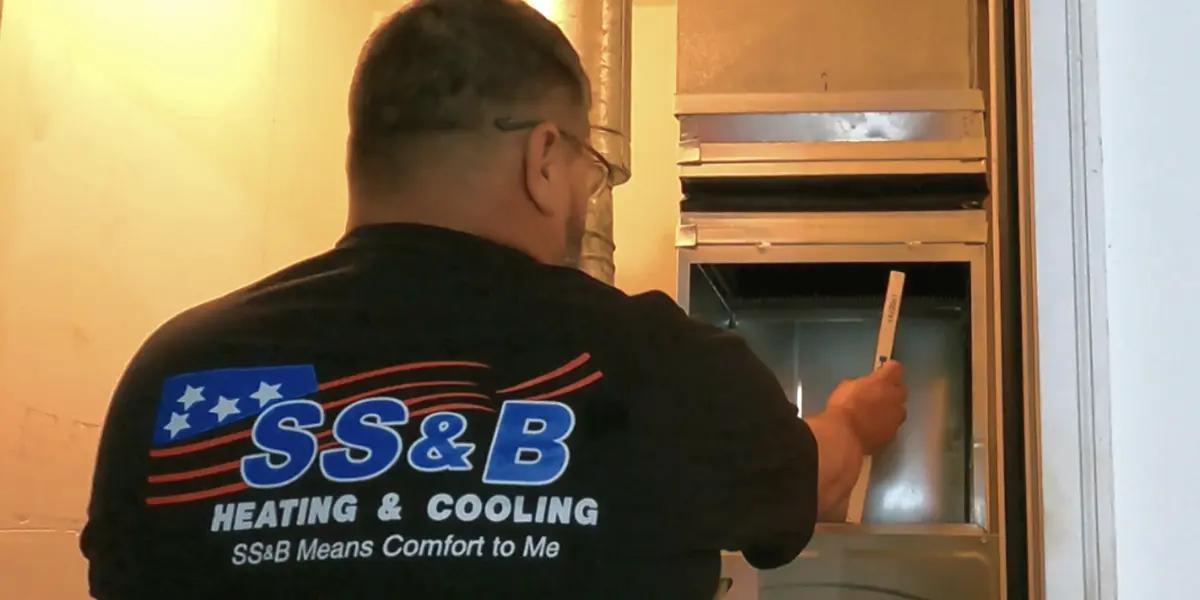Troubleshooting Your Furnace: What to Do When It Won't Turn On
Are you facing the frustration of a cold home because your furnace won't turn on when you need it most? Before panicking and reaching out to a professional, there are several common issues you can check and potentially resolve yourself. At SS&B Heating & Cooling in Springfield, MO, we understand the importance of a functioning furnace during the chilly months. We'll guide you through the top reasons your furnace may not be turning on and provide troubleshooting tips to get your home warm and cozy again.
Understanding Your Furnace:
Most homeowners have a forced-air gas furnace, which we'll focus on in this blog. Let's explore the top seven reasons your furnace may not ignite and explore steps to troubleshoot each issue.
1. Issue with Your Thermostat:
Start with the basics. Ensure your thermostat is set to heat and that the indoor temperature is lower than the thermostat setting. If that's not the problem, try switching the fan to "on" to force the furnace to blow air. Modern electronic thermostats often display error codes, so check for any error messages. If none of these steps work, read on for more potential causes.
2. Issue with Your Gas Line:
First, make sure your gas supply is turned on. You can verify this by checking the shut-off valve outside or testing another gas-burning appliance like the stove. If the gas seems fine elsewhere, ensure the gas supply to the furnace itself is open and unobstructed. If you smell gas or suspect a leak, evacuate your home and seek professional assistance immediately.
3. Issue with Your Gas Line (LP Gas):
First, make sure your gas supply is turned on. You can verify this by checking the shut-off valve outside or testing another gas-burning appliance like the stove. If the gas seems fine elsewhere, ensure the gas supply to the furnace itself is open and unobstructed. If you have LP (Liquid Propane) gas instead of natural gas, also make sure your LP gas tank is not empty. If you smell gas or suspect a leak, evacuate your home and seek professional assistance immediately.
4. Furnace Power Issues:
Sometimes, the problem lies within the furnace itself. Check if the power is turned on. Even gas furnaces rely on electricity and must be powered. Look for the power disconnect switch near the furnace and inspect the breaker to ensure it hasn't tripped. If it keeps tripping, it's time to call an HVAC technician.
5. Enhancing Air Flow and Safety:
Is your furnace working in some parts of your home but not in others? Blockages in your air ducts might be the culprit. Inspect the ductwork and seal any gaps with metal tape to maintain proper airflow. It's essential to remember that a lack of sufficient airflow can trip safety limits, potentially leading to your furnace not running as expected. Additionally, inadequate airflow can cause your furnace to overheat, which can significantly reduce its lifespan. Addressing these issues not only ensures even heating throughout your home but also helps maintain the safety and longevity of your furnace.
6. Improving Air Flow:
A straightforward way to enhance your furnace's performance is by replacing the air filter. When a filter becomes clogged, it can significantly restrict airflow, leading to potential issues. Ensure the filter is clean and replace it regularly to prevent low air flow, which can trip safety limits and prevent your furnace from running efficiently. Additionally, check for any obstructions near vent registers, as they can also impede air circulation and impact your furnace's operation.
7. Faulty Ignition Sensor (Pilot Light):
A malfunctioning ignition sensor or pilot light is a common cause of ignition failure. If your furnace clicks but doesn't fire up, follow these steps:
- Turn off the gas.
- Remove the front panel to locate the ignitor or ignition sensor near the burners.
- Clean the sensor or ignitor with care.
- Replace it, reassemble the furnace, turn on the gas, and restart the furnace.
Be patient, as it may take a few minutes for the furnace to start running.
If you feel uncomfortable performing these steps or if they do not resolve the issue, it's a clear indication that you should call a professional HVAC technician. Furnace repair can involve handling gas and electrical components, and it's essential to prioritize safety and expertise. Instead of risking potential hazards, reach out to our team at SS&B Heating & Cooling for prompt and professional furnace repairs. Our certified technicians have the necessary skills and experience to ensure your furnace is in optimal working condition.
When to Call a Certified HVAC Technician:
If none of the above troubleshooting steps resolve the issue or if you suspect motor or wiring problems, it's time to enlist the help of a professional furnace contractor. Don't risk further complications by attempting repairs on your own.
Heating in Summary
A malfunctioning furnace can be a source of discomfort and inconvenience, especially during colder seasons. By identifying and troubleshooting common issues, you can potentially resolve the problem yourself. However, when in doubt or facing more complex issues, it's best to leave it to the experts.
At SS&B Heating & Cooling in Springfield, MO, we're here to help you keep your home warm and cozy. Don't hesitate to reach out to our certified HVAC technicians for prompt and professional furnace repairs.
Need heating repair? Call 24/7 417-580-9905, Or fill out our convenient online form. We're here to assist you!
Frequently Asked Questions
Why Should I Have My Furnace Cleaned & Serviced Regularly?
Does Humidity Affect the Condition of Your Home, Health, and Comfort?

